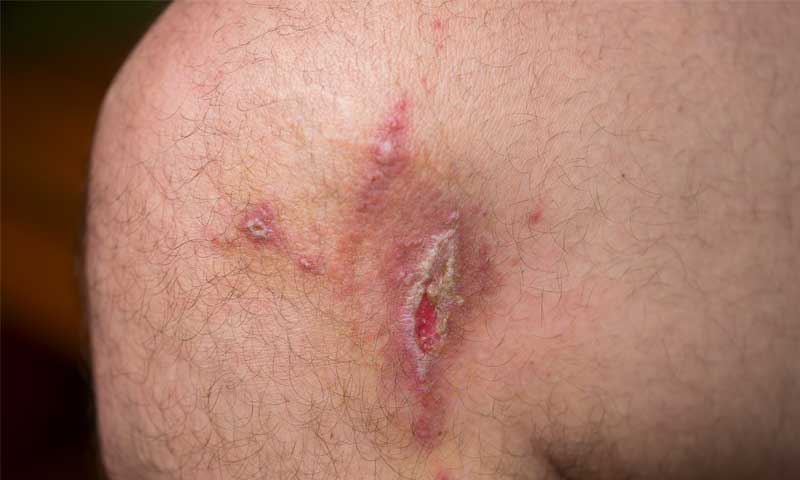This blog covers the first signs of leg ulcers and both medical and at-home treatments. We’ll discuss why it’s important to examine the underlying causes and how to reduce and prevent their frequency.
An ulcer is an open sore on your skin. Ulcers can affect any area of your skin, but often, they occur on the legs.
Leg ulcers can be very painful and often take as long as three to four months to heal, with appropriate treatment.
The most common cause of leg ulcers is poor blood circulation in your veins. This can lead to several other issues including chronic vein insufficiency. Early detection is key in preventing irreparable damage.
Anatomy of Leg Ulcers
A leg ulcer is a chronic sore that develops between your knee and your ankle. They typically appear on your inner leg near your ankle and may take several weeks if not months to heal.
They present as large, red, swollen, fluid-seeping sores with irregular edges that are resistant to healing.
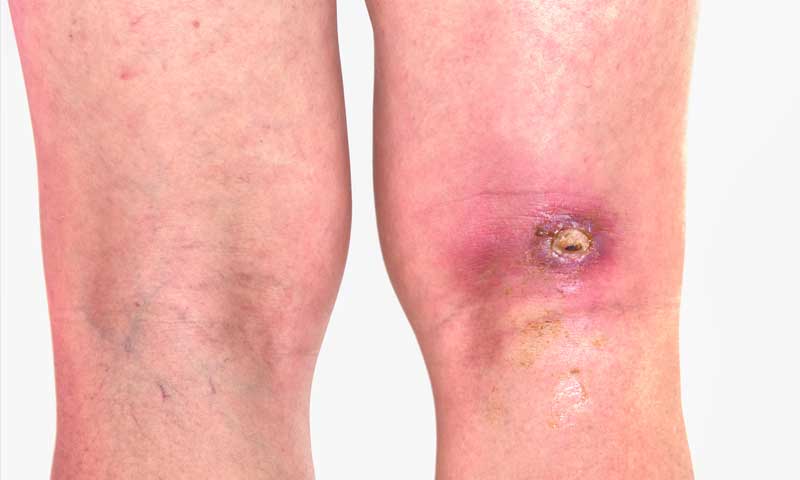
Generally, ulcers are characterized by how they look, their location, the surrounding skin.
Some causes of leg ulcers include:
• Lymphedema
• Venous Disease
• Peripheral Arterial Disease
• History of Leg Ulcers
• Deep Vein Thrombosis (DVT)
• Undergoing Surgery or Injuring an Infected Leg
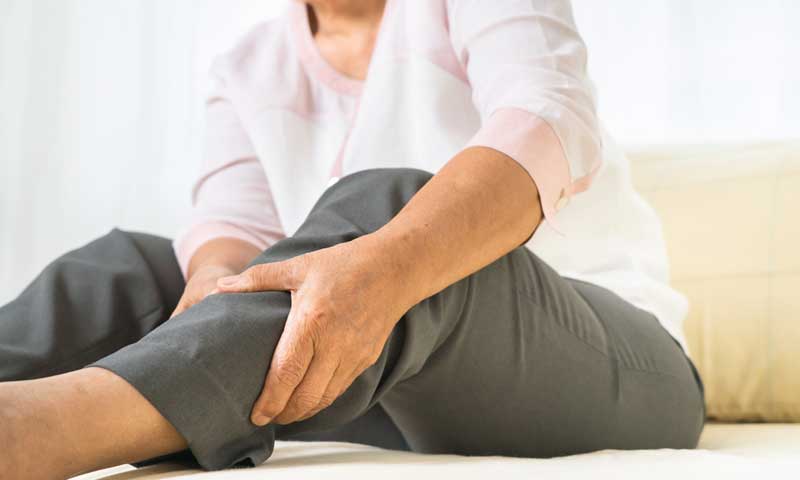
Signs and Symptoms
Most symptoms of vein disorders are transitory and can be effectively treated. However, venous leg ulcers are much more challenging and severe.
The heightened risk of an open sore getting infected is what distinguishes it from other diseases. If left untreated, a venous leg ulcer can have a negative impact on your health.
Signs of leg ulcers may include aching and tightness in your calves. Throbbing or a heavy feeling in your legs may also signify their coming appearance.
Once an ulcer develops, you may see discolored splotches around the edges due to pooled and trapped blood.
Some leg ulcers will only affect the skin, however, there are times when the sore may descend deeper into your muscle, your tendon, fat layer, or bone.
Risk Factors
Women are at a higher risk of having Venous leg ulcers. Women affected tend to be in their forties, while the men affected tend to be in their seventies. Other possible causes for venous leg ulcers include:
• Cancer
• Obesity
• Smoking
• Immobility
• Pregnancy
• Varicose Veins
• Heredity/Genetics
• Incompetent Valves
• Swelling of a Superficial Vein (phlebitis)
• Muscle Weakness in the Legs, Leg Injury, or Trauma
A majority of ulcers heal within three months. However, some ulcers may take years to heal and about 15% may never completely heal.
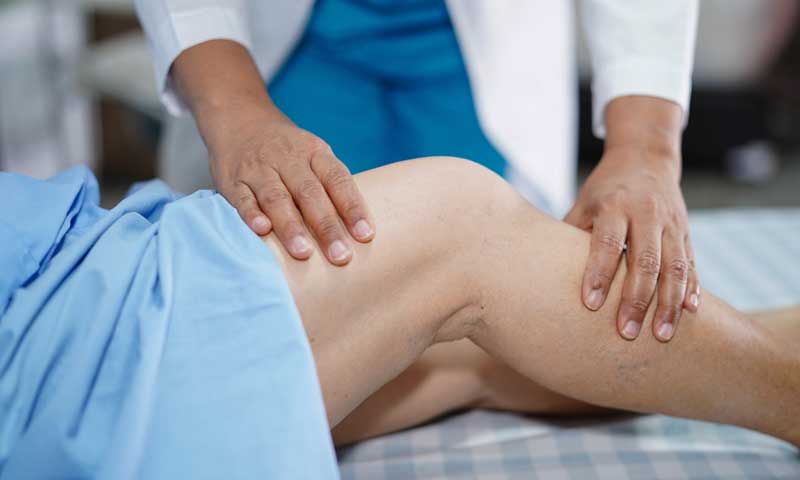
Seeking Medical Help
You should contact your doctor if you have a wound that will not heal, or if you think that your wound is infected. Your doctor should inquire about any history of recurring or chronic conditions, like diabetes or hardening of the arteries.
In some cases, additional tests such as an X-ray or CT scan may be needed.
Signs of a wound or leg ulcer infection can include:
• Chills
• Odor
• Fever
• Bleeding
• Increased Pain
• Excess Drainage
• Swelling About the Wound
• Redness, Increased Warmth
• Cloudy or Yellowish Drainage
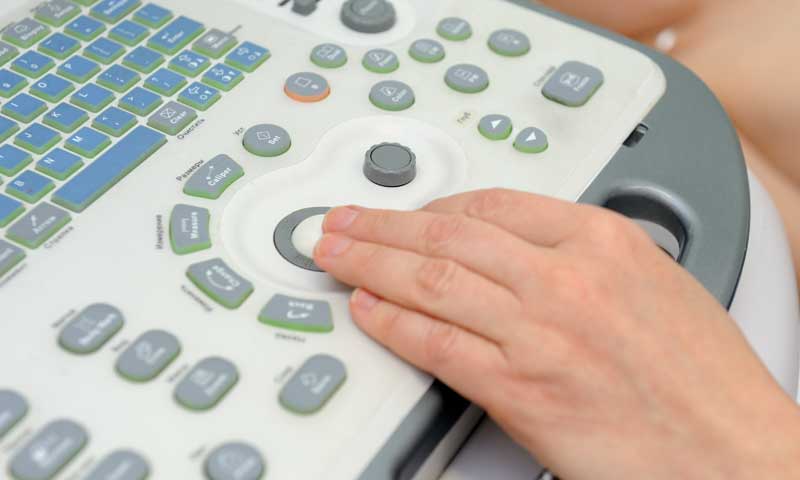
Diagnosing Leg Ulcers
A physician will perform a Doppler Study to evaluate your veins and arteries. During a Doppler Study, an ultrasound probe is placed on the skin in order to visualize blood flow patterns.
Your doctor may also obtain blood pressure readings at your arms and ankles for comparison if he/she suspects arterial disease.
Treating Leg Ulcers
Some treatment options are non-invasive, while other methods are medically involved. Treatment options are administered based on the severity of your condition.
Medical treatment strives to enhance blood flow to the affected area as well as encourage recovery of the ulcer.
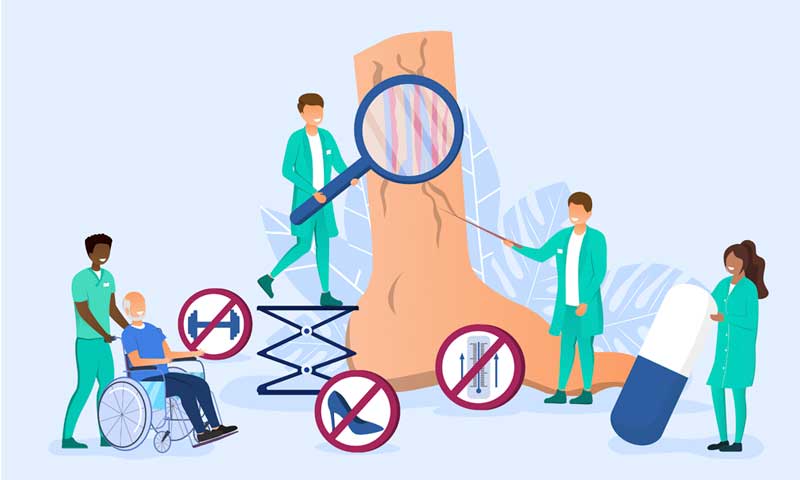
Practicing Prevention
Here are some things that you can do at home to prevent a leg ulcer.
Compression Stockings
Compression stockings assist in reducing strain and edema on the skin due to increased pressure and swelling.
Elevate Your Legs
Elevating your legs will help in circulating blood back to your heart. Also, use a pillow to prop up your feet when sleeping, and elevate your legs above your heart for 30 minutes when you awaken, and repeat up to four times daily.
Maintain Healthy Skin
Keep your lower legs clean and moisturized with a non-drying, alcohol-free moisturizing cream or lotion.

Exercise
Exercise is known to promote healthy veins and blood flow. Daily exercise is also an awesome way to increase circulation. Foot and ankle exercises can promote good blood flow. So, give it a try.
Point your toes upwards, then point them away from you. Repeat this exercise for a few sets every day. This can be done in a sitting or standing position.
New Jersey Vein and Vascular Center in Morris County is committed to personalized patient care and good vein health.
Our state-of-the-art vein center maintains the highest standards and advances in the field of vein and vascular care. Our goal is to diagnose and treat the underlying causes of your various vein conditions.
For more on our office and services, please contact us today.

